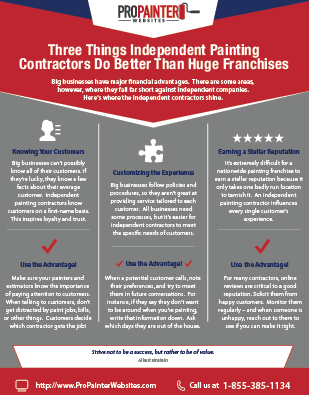Seasonal Factors To Consider For Commercial Outside Paint: What You Required To Know
Seasonal Factors To Consider For Commercial Outside Paint: What You Required To Know
Blog Article
Short Article Produced By-Burnham Decker
When you're preparing a commercial external paint job, seasonal elements can make or damage your results. You'll want to consider how temperature level and moisture impact paint application and drying out times. Choosing the ideal period can guarantee your paint sticks correctly and lasts much longer. Yet which periods are truly the very best for this type of work? Let's discover the key elements that can impact your job's success.
The Impact of Temperature Level on Paint Application
When you're preparing a commercial exterior paint task, the temperature level can significantly affect how well the paint adheres and dries out.
Ideally, you intend to paint when temperatures vary in between 50 ° F and 85 ° F. If it's as well cold, the paint may not heal properly, resulting in concerns like peeling or cracking.
On the other side, if it's too hot, the paint can dry also quickly, stopping appropriate bond and resulting in an irregular coating.
You need to also take into consideration the moment of day; morning or late afternoon provides cooler temperature levels, which can be more favorable.
Constantly examine the producer's referrals for the certain paint you're using, as they frequently offer support on the optimal temperature variety for optimal outcomes.
Humidity and Its Result on Drying Times
Temperature isn't the only ecological factor that influences your business external paint task; moisture plays a considerable duty too. patios tulsa can reduce drying out times drastically, affecting the total quality of your paint work.
When the air is filled with wetness, the paint takes longer to treat, which can bring about problems like poor bond and a greater risk of mildew growth. If you're painting on an especially damp day, be prepared for extended wait times between layers.
It's vital to monitor regional climate condition and strategy accordingly. Ideally, aim for humidity levels in between 40% and 70% for ideal drying.
Maintaining these consider mind ensures your project stays on track and delivers a long lasting surface.
Best Seasons for Commercial Outside Painting Projects
What's the best season for your commercial external paint tasks?
Spring and early fall are normally your best bets. During these seasons, temperature levels are light, and moisture degrees are frequently lower, producing perfect conditions for paint application and drying out.
Stay clear of summertime's intense heat, which can create paint to completely dry too swiftly, resulting in inadequate adhesion and coating. In a similar way, winter months's cool temperature levels can hinder correct drying out and healing, risking the long life of your paint work.
Aim for days with temperatures between 50 ° F and 85 ° F for optimum outcomes. Bear in mind to examine the local weather forecast for rain, as wet problems can wreck your project.
Planning around these aspects guarantees your painting project runs efficiently and lasts much longer.
Verdict
Finally, preparing your business external paint jobs around seasonal considerations can make a significant difference in the end result. By organizing you could look here throughout the optimal temperatures and humidity levels, you'll make sure far better adhesion and drying times. Keep in mind to watch on neighborhood weather prediction and select the correct time of year-- springtime and very early loss are your best options. Taking these steps will certainly assist you accomplish a long lasting and expert finish that lasts.
